I came of age in the ’70’s and ’80’s shooting film like the vast majority of other people did: you picked up your yellow box of Kodak 200 or 400 speed film at Walgreens, shot a birthday party or Thanksgiving or vacation on it, dropped the film back off at the same Walgreens, and a couple of days later were handed a packet with the processed negatives in plastic sleeves, and a pile of cheap prints that looked like s**t but served to document whatever event you’d hoped to document. You’d flip through them, perhaps show them to the other people who’d been present, then write “Xmas 1979” or somesuch on the packet with a Sharpie and dump the envelope into a storage box with the rest of them.
Mind you, I did this with some pretty good cameras: a 1960’s Konica SLR I’d gotten handed down from my grandfather, then a series of Nikon electronic SLRs (I was lead writer on their ad account for a period in the mid-’90’s and had free access to much of their best stuff). While working on the Nikon account, I took the much-lauded 35Ti on vacation a couple of times. The drugstore prints were…meh.
The exceptions were the rolls of “art photos” of our sons I shot on black and white film, on semi-pro 1990’s Nikons like the N90s, for which I got contact sheets made at a pro photo lab, then larger prints of the frames I selected, again printed at the professional lab. These photos were beautiful, and I still have several examples on tables and walls around the house.
The point being, despite the dozens (hundreds?) of rolls of film I shot over a period of 30-some years, on very-good-to-professional 35mm equipment, only a handful of examples made me look at the finished product and think, “Damn, dude—that’s beautiful.” Mostly, this was due to the fact that, with the exception of some slide film I shot in Alaska, the only color photos I saw were dime-store quickie prints of consumer-grade film. And they looked mostly terrible, despite being uniformly properly exposed and in-focus from the high-quality cameras I was using.
Then a couple of years ago I splurged on a FujiFilm X100F that rekindled my interest in photography as an artsy hobby. Crucially, for the first time, many of the photos I took were…beautiful. I started posting them on Instagram, and began following the accounts of people whose photos I admired. I noticed that many of the photos I liked best were shot on film. I dug out couple of the old 1990’s Nikons and found that their housings had acquired a disgusting sticky quality, and their once-advanced technological features now seemed labyrinthine and cumbersome, and the cameras, quite bulky. It turns out I didn’t want LCD screens and multi-function menus on my film cameras. I wanted my grandfather’s old Konica, but that was long gone (I’d traded it in towards one of the electronic cameras I found I now disliked). Nonetheless, I replaced the batteries in an old Nikon body, and shot my first rolls of film in some years.
More importantly, I discovered the new paradigm of using high-quality scans, not cheap prints, as the primary way of viewing and storing color photos. My god, these shots looked good! They were positively luminous, the colors rich, the edges sharp. But I longed for a thoroughly old-school film-shooting experience like I’d had with the old Konica.
I acquired an old Nikon FM body to go with a couple of nice old manual Nikkors I had, then a Nikon FE. Then a Mamiya m645. Then a couple of Yashica-Mats, which I’ve since upgraded to a couple of mid-’50’s Rolleiflexes. And yes, there are others. I love these classic old cameras, and the results, but I found I missed the pocketable size of my little X100F.
That at last led me to my Olympus XA. I distrusted its plasticky, quaintly modernistic look at first, but the reviews were laudatory, and the used-gear guru at National Camera assured me that this was the compact camera the pros carried with them back in the ’80’s. I laid down $125 for a nice example, with the A11 flash that I’ve never attached, much less used. My first roll was Tri-X 400, and it was a revelation: amazingly crisp for such a tiny machine, with a distinct aura, especially at wider f-stops, where the vignetting becomes quite noticeable (and to my eyes, awesome).
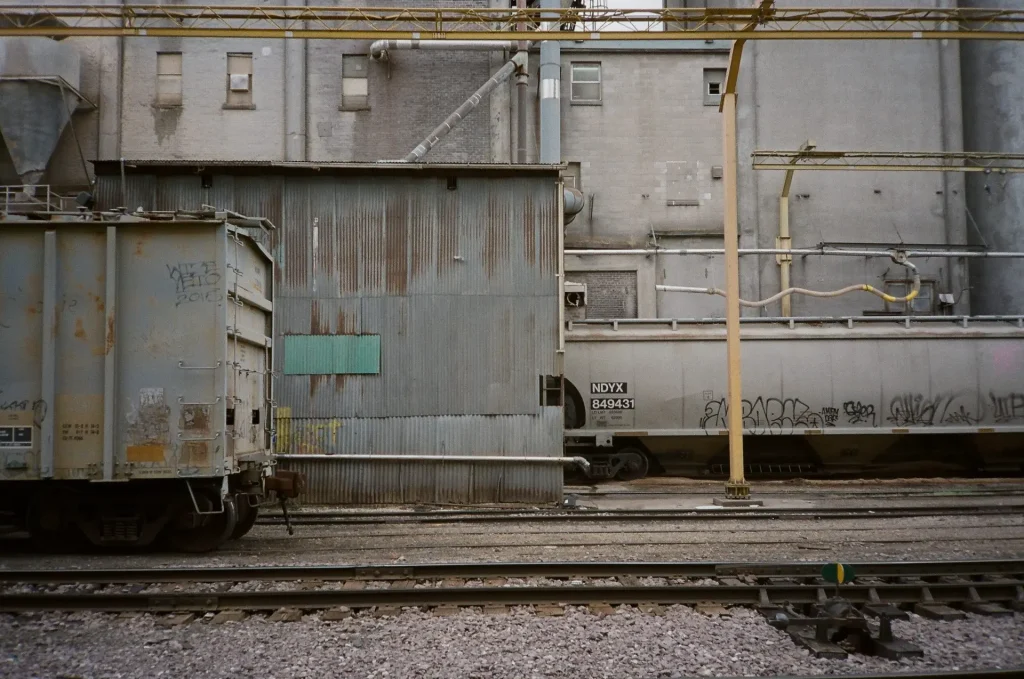
There’s been a lot written about the XA, a truly revolutionary design by the legendary Yoshihisa Maitani. I won’t go into the technical specs here. I’ll just say that I find it an easy, genuinely fun little camera to shoot. I get to pick the aperture to achieve the effect I want, and the exposure’s always there (I love the little 1.5-stop compensation lever for backlit subjects, but with the exposure latitude of modern C-41 film like PRO 400H, I usually get a usable frame either way).
But with all these cool old cameras, and all these wonderful films to play with, a problem had emerged: in the thrill of experimentation, it became hard to remember what film was in what camera. I once removed a finished roll of what I thought to be Ektar 100 from my Nikon FE only to discover I’d been shooting Ilford HP5 the entire time!
So I made a list of what film was in what camera, but I despise lists, and this one quickly became outdated, then crumpled, then trashed. Some of my cameras have little slots in which to slide the box-end of the film being shot, but others didn’t, and much of the film I was shooting was 120 that comes in foil pouches and thus doesn’t provide a handy little square cardboard label. I tried writing the film name on a piece of tape then sticking it on the back of the camera, but that looked really cheesy and stupid, and I worried about the adhesive marring these beautiful old machines.
Over this time, I learned that I preferred some film when shot in certain cameras. I hated Ektar in one of the Yashica-Mats, but love it in the Mamiya 645. Like pretty much everyone, I love Portra 400 in pretty much everything. I disliked the roll of Cinestill 50 I shot, but I’ve got two rolls in the freezer that I’ll return to eventually. I managed to properly expose (mostly) a couple of rolls of Velvia 100, one in the 2.8C and the other in the Mamiya, sent them to California for processing and scanning, and hated the results, even after I had them rescanned here in Minneapolis. I’ve run roll after roll of Ilford Pan F 50 through my Rolleiflex 2.8, and god, I love it so; every frame looks like it was taken sometime between 1880 and yesterday. I adore Tri-X in my Rollei 35s (my other pocketable marvel). And so on.
With the XA, I’ve gotten wonderful results using Tri-X, Ektar, both Portras, and the cheaper Fuji films. But it’s Fujicolor PRO 400H that I now shoot almost exclusively in it.
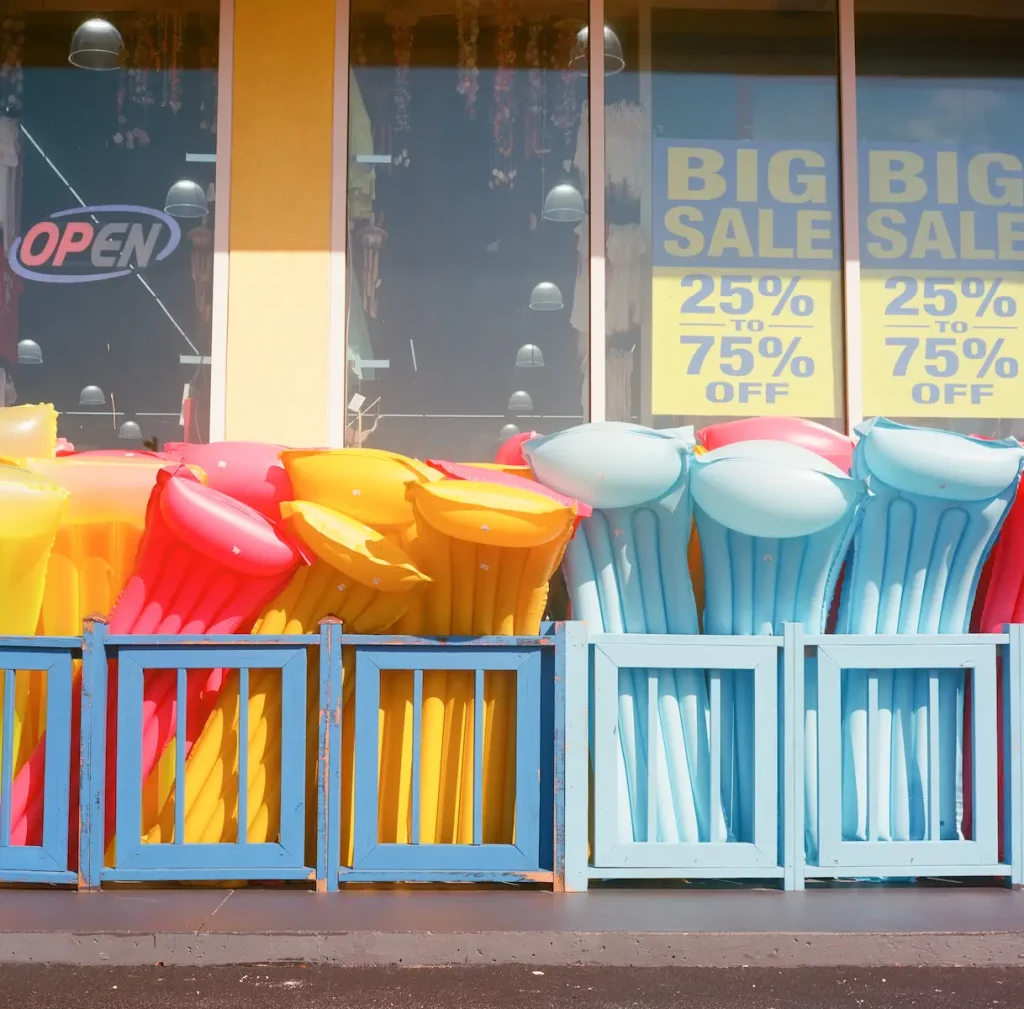
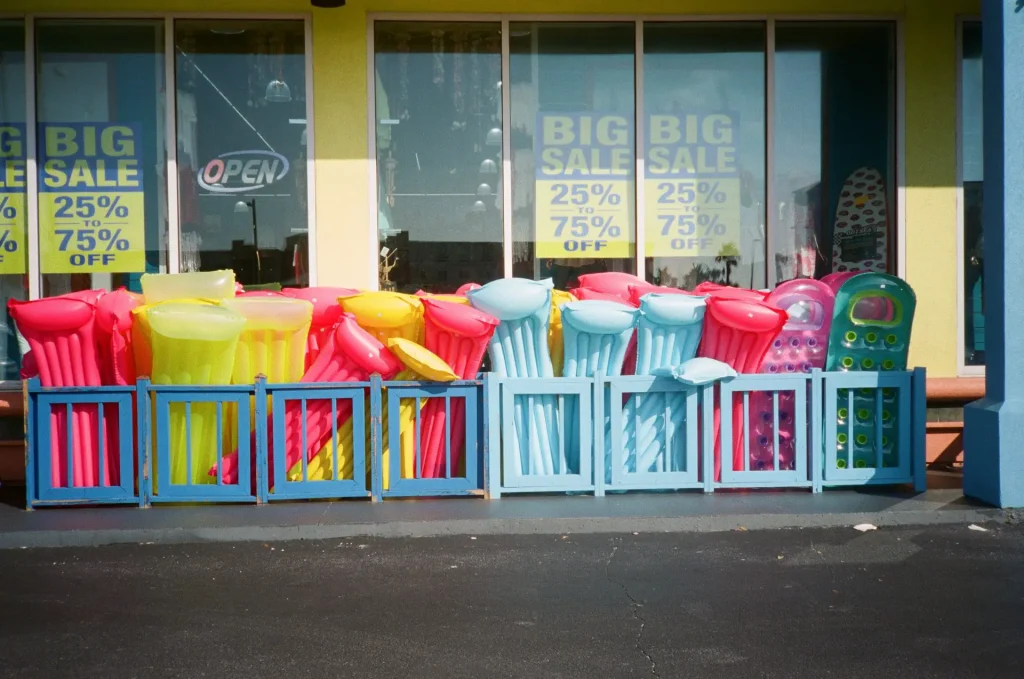
I think of Fujicolor PRO 400H as the “happy film.” I’m no emulsion scientist, but I find the colors more vibrant than the Portras, and less harsh than Ektar. I had very good results with the cheaper Fuji color stocks, but since it usually takes me some weeks to finish a 36-exposure roll of 35mm film, why bother saving a couple of bucks when I like the 400H even more? Also, that bag of film in the basement freezer was becoming unwieldy. I needed to simplify.
The “glow” that I love in frames taken in the XA (which no doubt results from the technical limitations inherent in producing such a genuinely tiny, but extremely high-quality camera) has proven to be a perfect match with the sprightly vibrance of 400H. This is the film/camera combo that I use for minimalist color/tone explorations. I might hesitate to spend $3 or so on a frame of a red mailbox on a blue wall shot on Portra on the Rolleiflex, but with the lower cost-per-frame of 35mm, I’ll try stupid little shot after stupid little shot, and many of those minimalistic whims turn out to be quite beautiful. On those occasions when I’ve shot the same subject on both the XA and one of the Rolleiflexes or the Mamiya 645, I’ve preferred the XA and PRO 400H more times than not. The shots on the XA are less formal, more spontaneous, yet still sharp and accurate. And the color rendition is just exquisite. These pictures make me smile.
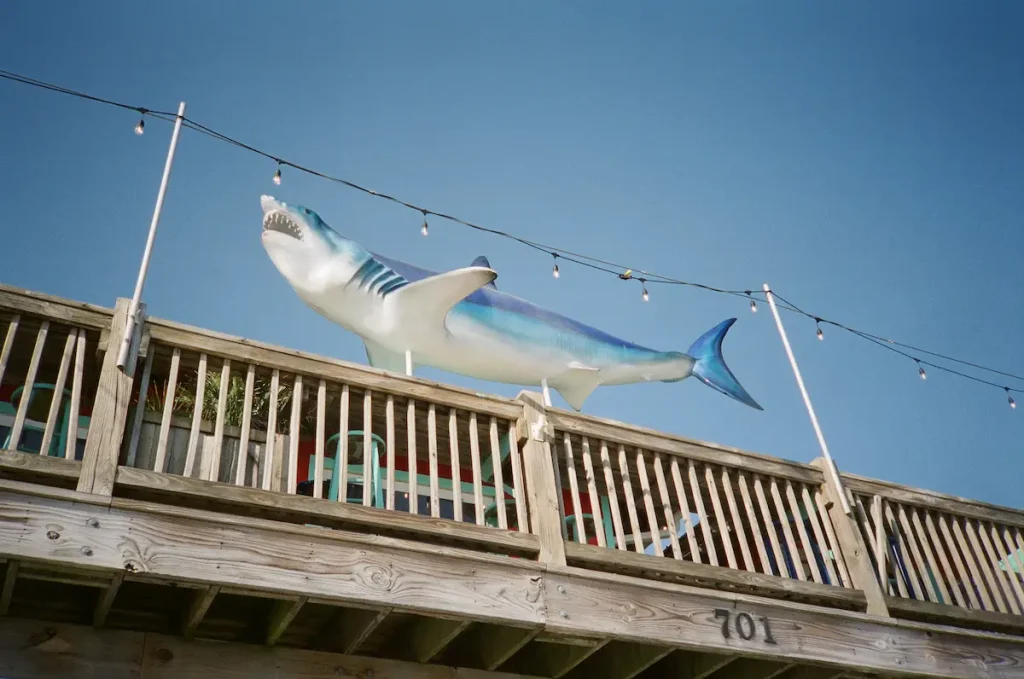
Initially, I found myself lightening many of the XA/400H shots in Lightroom, so I now shoot the film two-thirds of a stop or so brighter by cheating the XA’s film speed lever over a couple of clicks. I now almost never make any adjustments to these shots. I tend to love the original scans as-is.
With the XA’s exceptionally smooth shutter, and the almost nonexistent travel of its electronic shutter button, I regularly shoot down to 1/15 or even 1/8 with good results. And since this tiny camera is literally almost always with me, I’ve shot many images of, say, a folded umbrella leaning against a restaurant courtyard fence, that I never would have captured otherwise. With that famous little sliding clam-shell cover, it slips easily in and out of even a jeans pocket. It’s small and black, so people tend not to notice it. I regularly preset focus and shoot it from the hip with good results.
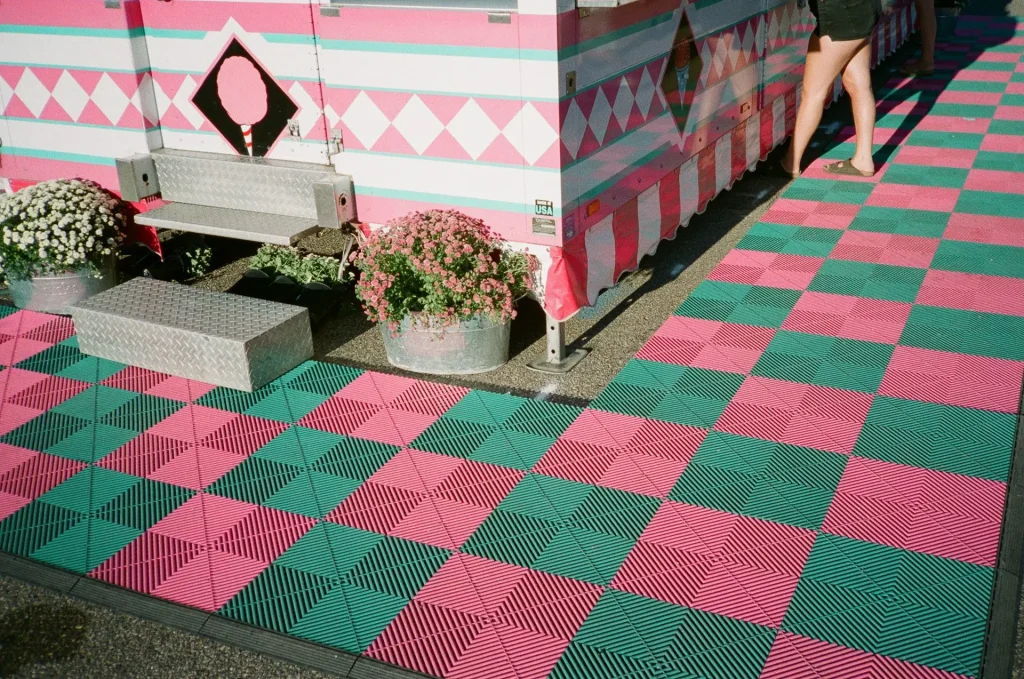
For what it’s worth, my current favorite pairings are: 400H in the XA, Tri-X in the Rollei 35s, Ektar (or 400H) in the Mamiya m645, Portra in the Rolleiflex 3.5B, Ilford Pan F or Delta 100 in the Rolleiflex 2.8C (these slower films let me shoot it wide open more often), and Ilford HP5 in the Nikon FE (which I tend to keep a 24mm lens on for wide landscapes).
For travel, the XA, one of the Rolleiflexes and the X100F (a really marvelous little thing, I must say) give me a nice, space-efficient kit, with no extra lenses to lug along.
You can find decent-to-excellent Olympus XAs in the $75-$200 range. I assume they’ve proven reliable over time: the listings almost never include any limitations or warnings. I’ve had no problem with mine. It’s a fun, affordable, genuinely minuscule camera that gives me high-quality photos with a distinctive personality. I love it.
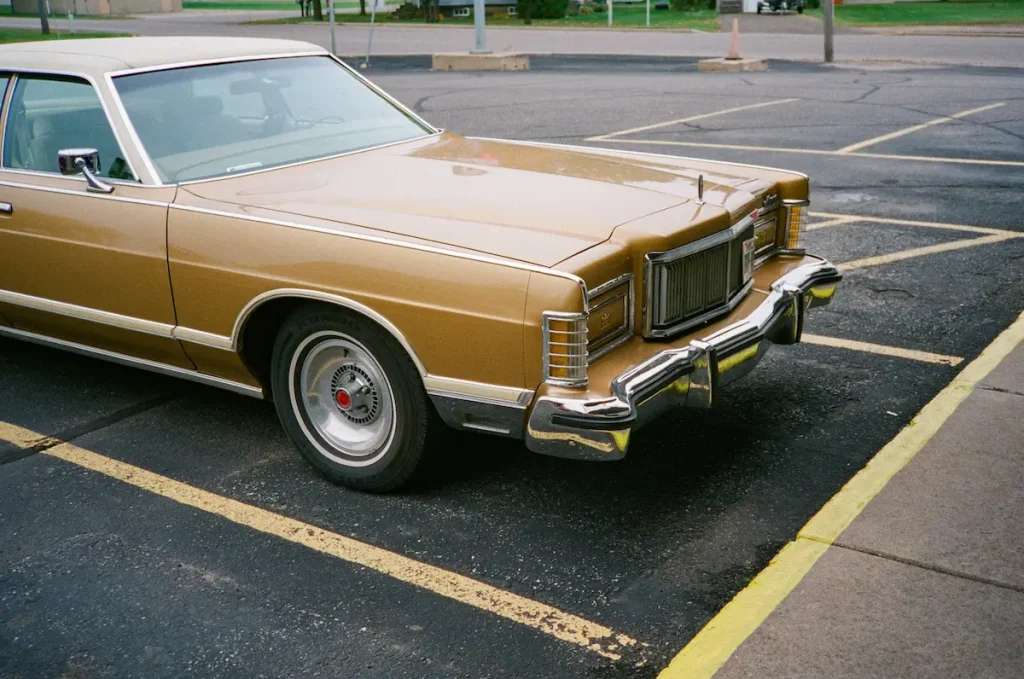
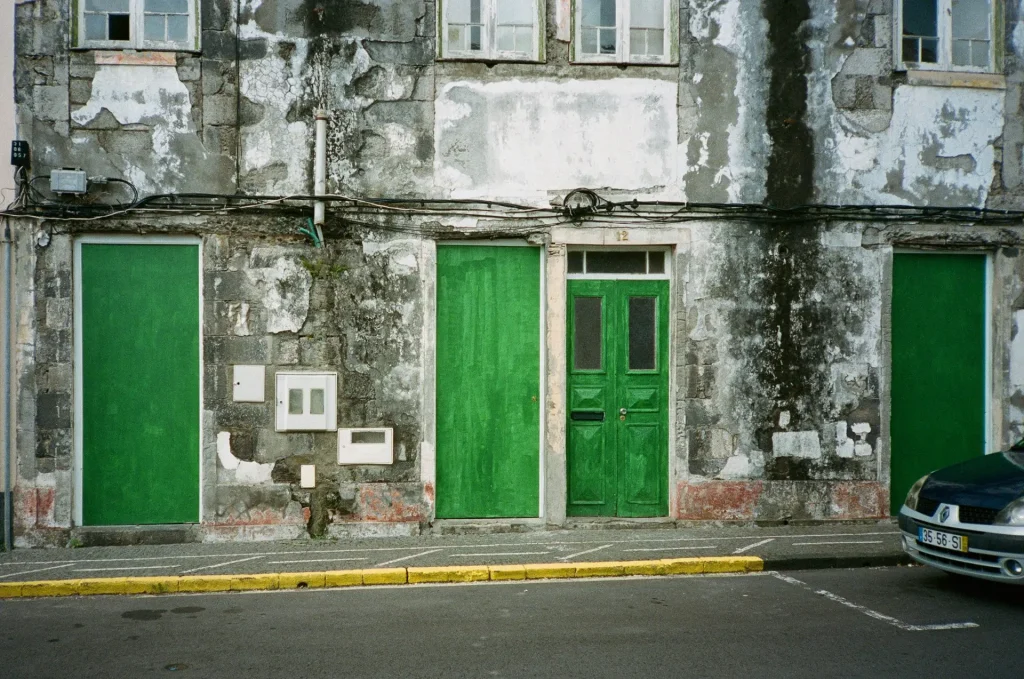
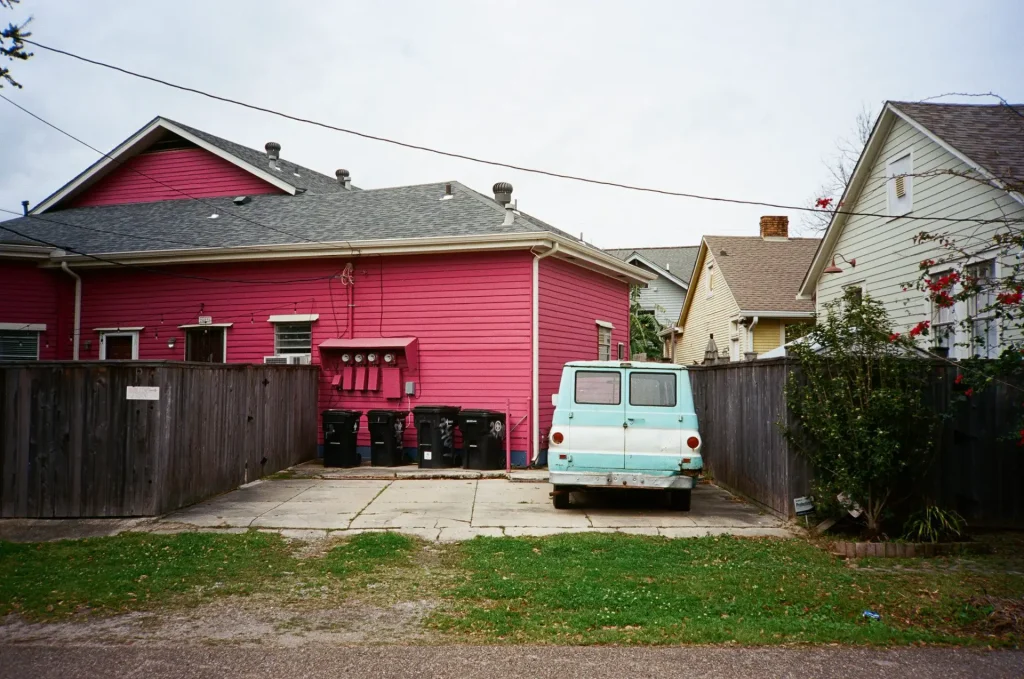
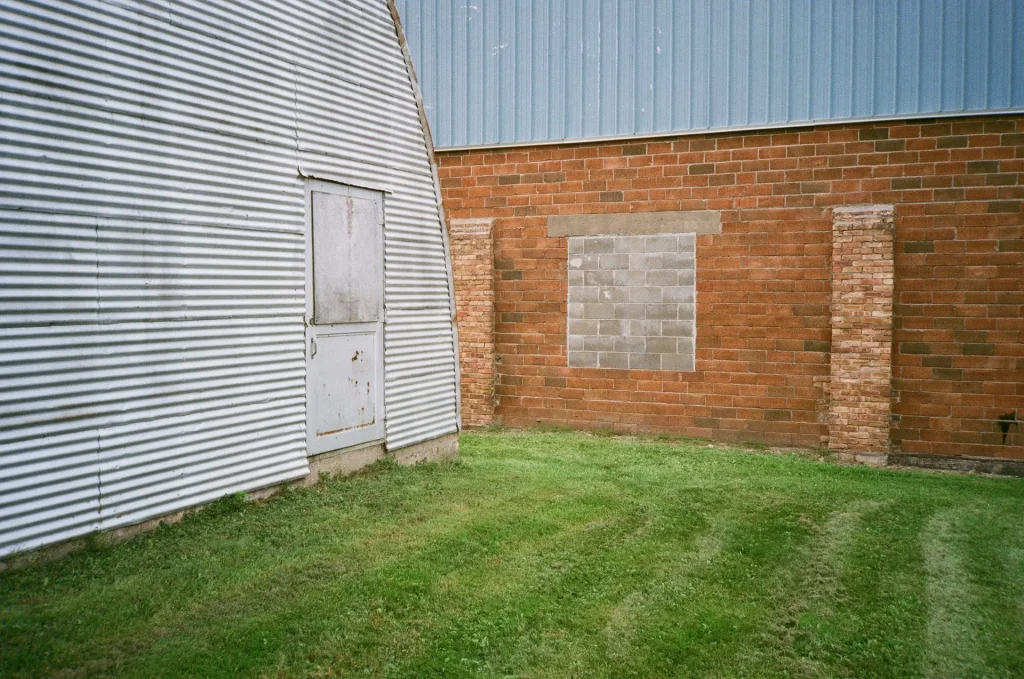
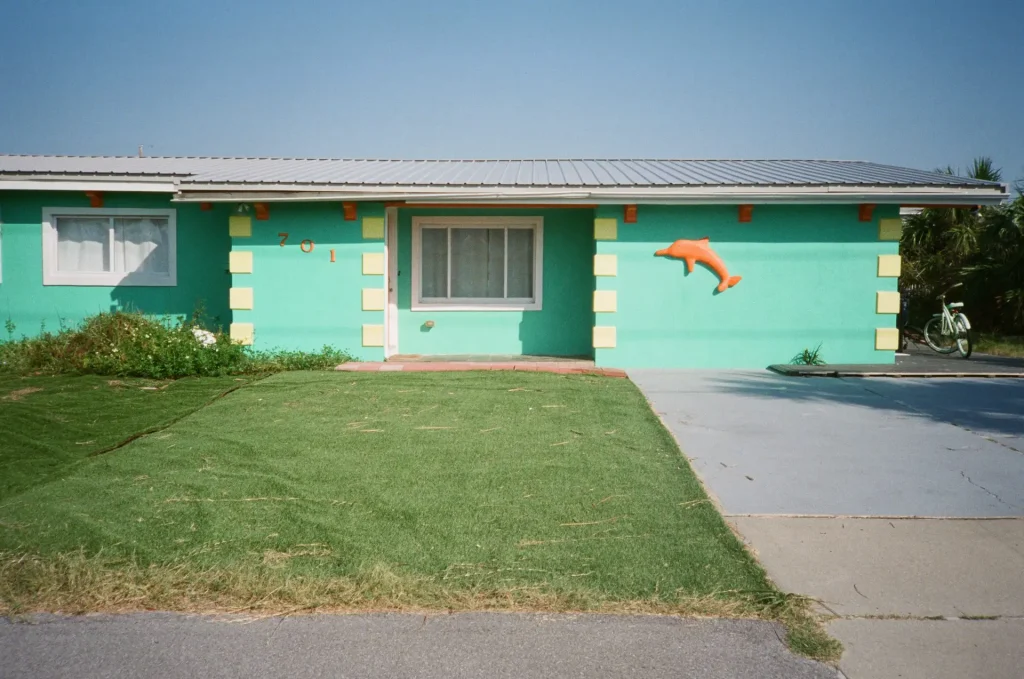
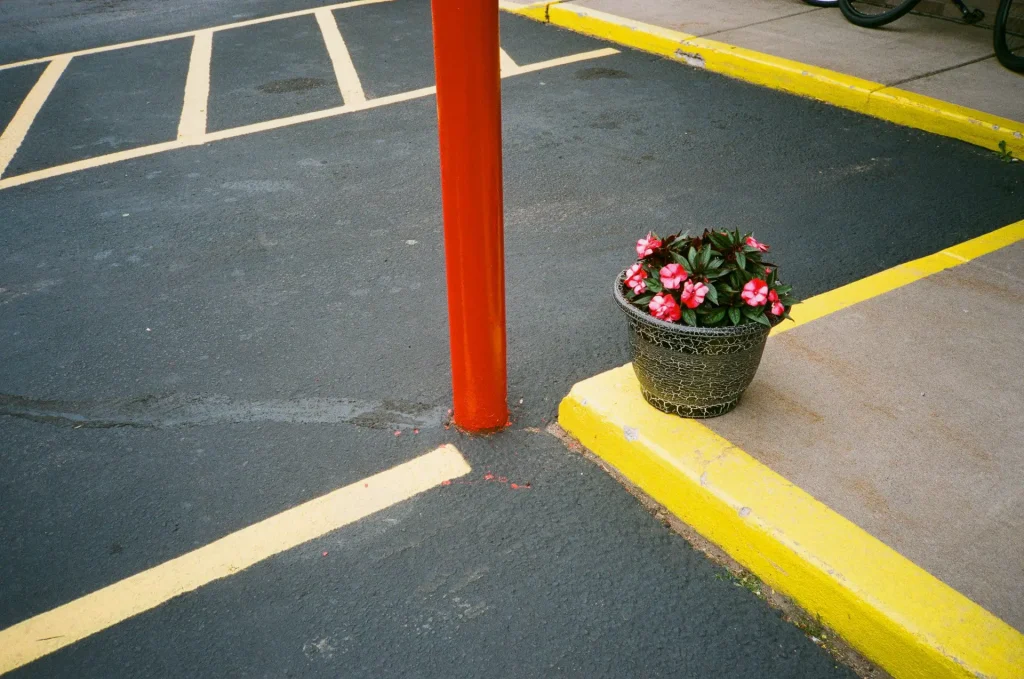
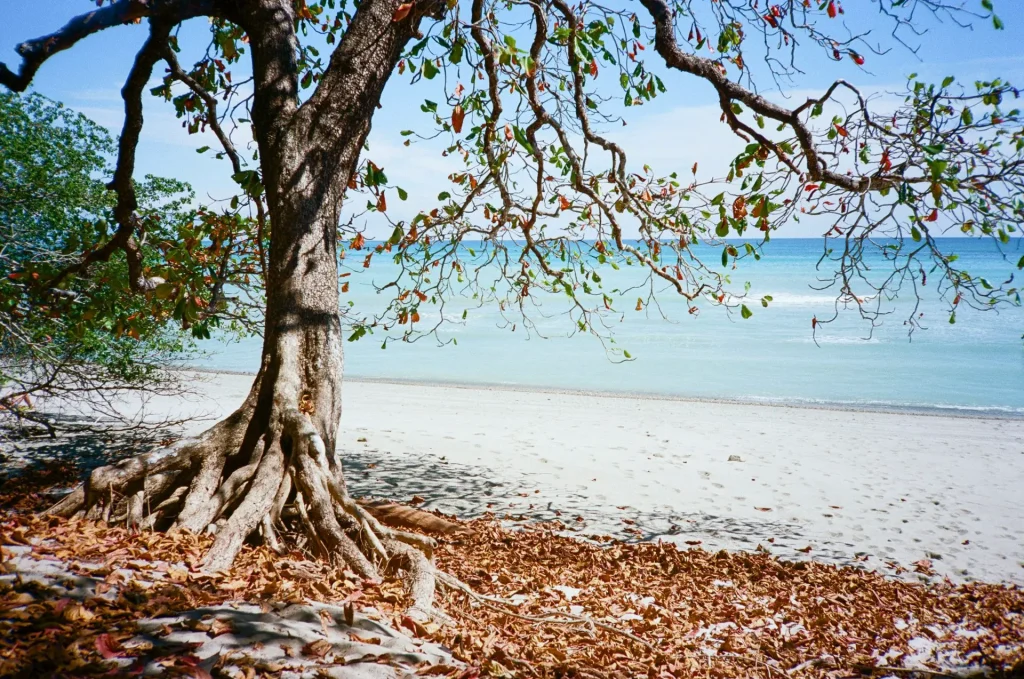
Phil Calvit is an ad copywriter and classic camera hobbyist in Minneapolis. You can see his work on Instagram here.
Share this post:
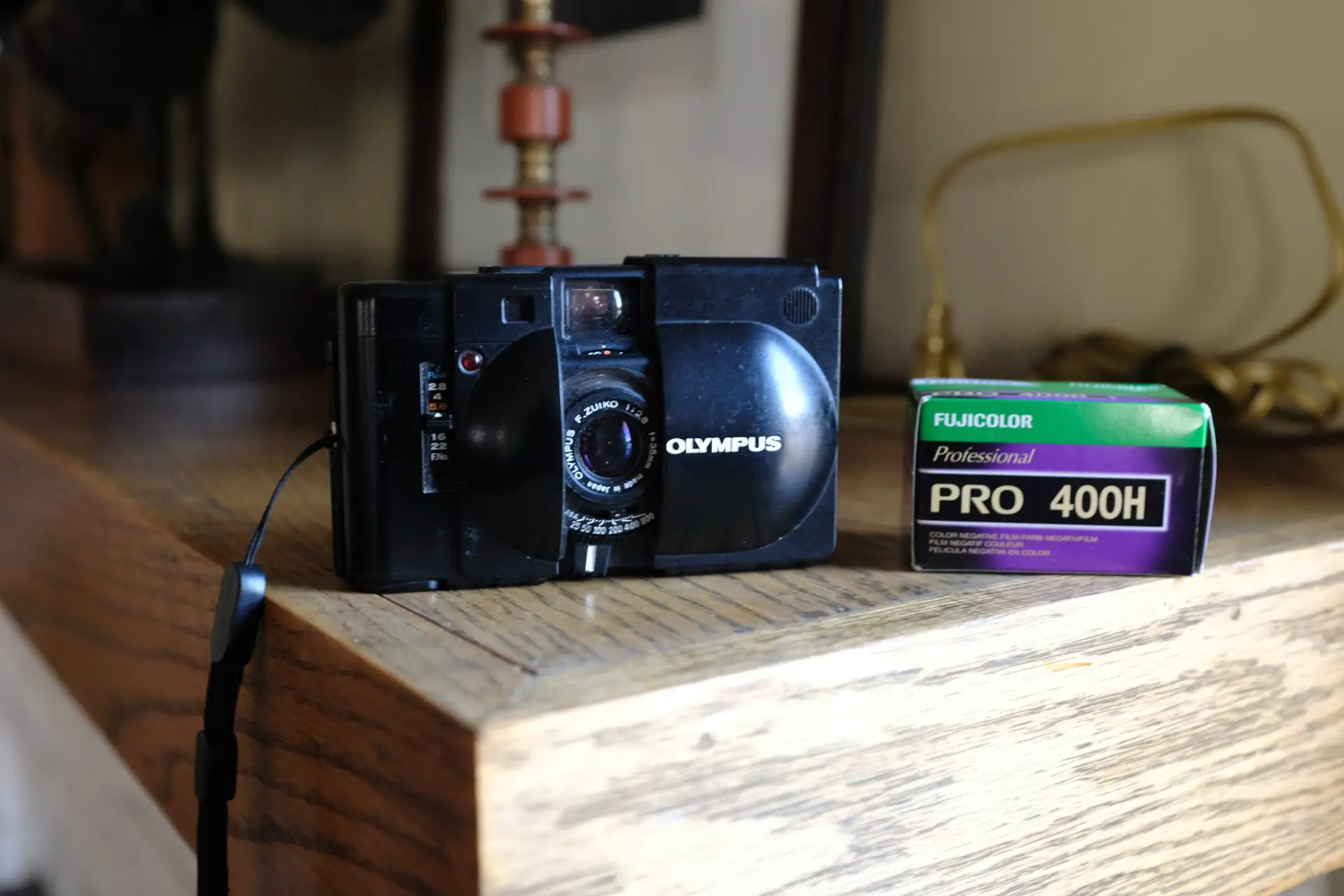








Comments
Alexander Seidler on Olympus XA and Fujicolor Pro 400H – A Favorite Camera/Film Combo – By Phil Calvit
Comment posted: 09/12/2020
Bill W. on Olympus XA and Fujicolor Pro 400H – A Favorite Camera/Film Combo – By Phil Calvit
Comment posted: 09/12/2020
Sacha Cloutier on Olympus XA and Fujicolor Pro 400H – A Favorite Camera/Film Combo – By Phil Calvit
Comment posted: 09/12/2020
Comment posted: 09/12/2020
William Wells on Olympus XA and Fujicolor Pro 400H – A Favorite Camera/Film Combo – By Phil Calvit
Comment posted: 10/12/2020
Phil Snaps on Olympus XA and Fujicolor Pro 400H – A Favorite Camera/Film Combo – By Phil Calvit
Comment posted: 10/12/2020
I got my hand on an XA3 and an XA4, and in all honesty I have been a bit underwhelmed by the results. Almost every picture from these cameras I see on the interwebs also look more grainy and soft, but yours don't. I suspect these cameras tend to underexpose a bit, as you wrote you felt the need to overexpose by 2/3 of a stop, and not every lab provides great scans.
Comment posted: 10/12/2020
Marc on Olympus XA and Fujicolor Pro 400H – A Favorite Camera/Film Combo – By Phil Calvit
Comment posted: 12/12/2020
The Rangefinder Focusing Mechanism Gear does wear out, over Time, if you use the XA much. Further, the Rangefinder Patch into some Iterations could being fade, and hardly being visible, and the ClamShell Design "Dust Cover" as Olympus says, could get scratchy, which means, simple from too much Open-Close Pulls, it leaves Wear & Tear onto the Plastic Body Shell. I am glad, my Iterations both don't suffer from this common Issues.
See what happened to the Contax T2/T3, since some "infamous" Celeb featured this on a Talkshow some Years ago...it's horrible, pathetic.
Fine Photographs !
Alistair on Olympus XA and Fujicolor Pro 400H – A Favorite Camera/Film Combo – By Phil Calvit
Comment posted: 12/12/2020
The shutter speed needle in the viewfinder is on a separate circuit from that which actually controls the shutter. It seems not uncommon for the indicator circuit to go wrong so the needle under-reads by several stops, while the actual shutter speed is still correct. Don't scrap your camera just because the needle suddenly goes awry!
The rangefinder patch was dull from day 1, and got no better as time went by. You can improve the appearance by darkening the centre of the main viewfinder image. I have read of people putting a tiny bit of black tape on the centre of the front viewfinder window. I have used a black permanent magic marker to make a dark mark on the viewfinder window. (In either case, look through the finder as you are applying the fix to be sure it is in just the right position.) These "fixes" just mean that the main image does not totally wash out the image from the rangefinder, and although quite crude, they are effective.
This is the hardest camera ever to load! It has just one sprocket and the take-up reel turns the wrong way. It is so very easy to end up with a completely unexposed film because it has not been pulled through the camera. Make very sure that the film is moving through the camera by winding the rewind lever until it just meets resistance before winding the film on using the thumb wheel. The rewind lever should turn as film is drawn out of the cassette. If it does not, the film leader may have become disconnected from the take-up reel.
Craig on Olympus XA and Fujicolor Pro 400H – A Favorite Camera/Film Combo – By Phil Calvit
Comment posted: 07/03/2021